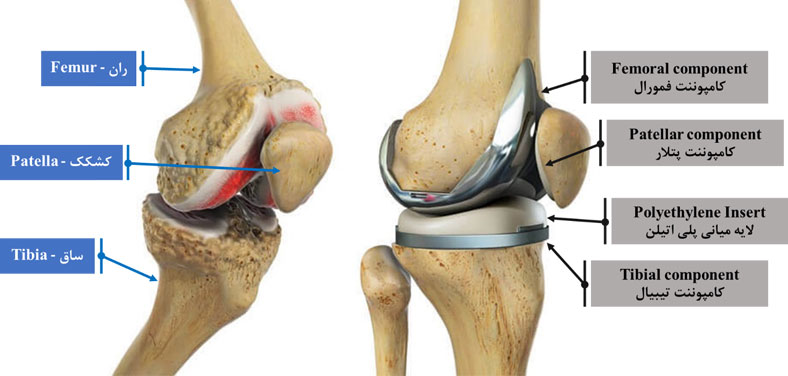Knee Prosthesis
Knee joint degeneration and injury are prevalent conditions that result in severe pain and diminished joint mobility and function. These problems significantly impair the patient’s quality of life. As joint injuries progress, these disabilities intensify, and given the irreparable nature of the damaged tissue within the joint, the sole means of alleviating pain and enhancing function is through the replacement of the knee joint with artificial prostheses.
Concurrently with the increasing incidence of knee injuries, the utilization of knee prostheses has surged. A knee prosthesis is an implant meticulously designed to replicate the anatomy of the knee joint and comprises the following components:
- Femoral Component (Upper Segment): This segment interfaces with the distal end of the femur and is typically constructed from metal alloys, ensuring robust durability and optimal performance.
- Tibial Component (Lower Segment): This component is affixed to the proximal portion of the tibia and is usually fabricated from high-strength metal, providing a sturdy foundation for the prosthesis.
- Polyethylene Insert (Intermediate Layer): Positioned between the femoral and tibial components, this inserts functions as a smooth and low-friction layer, facilitating natural joint movement and reducing wear.
- Patellar Component (Kneecap): This section attaches to the patella and is generally made of durable plastic, designed to seamlessly integrate with the other components of the prosthesis, thereby ensuring cohesive functionality.

Products
Cardiovascular
Orthopedics
Dentistry

